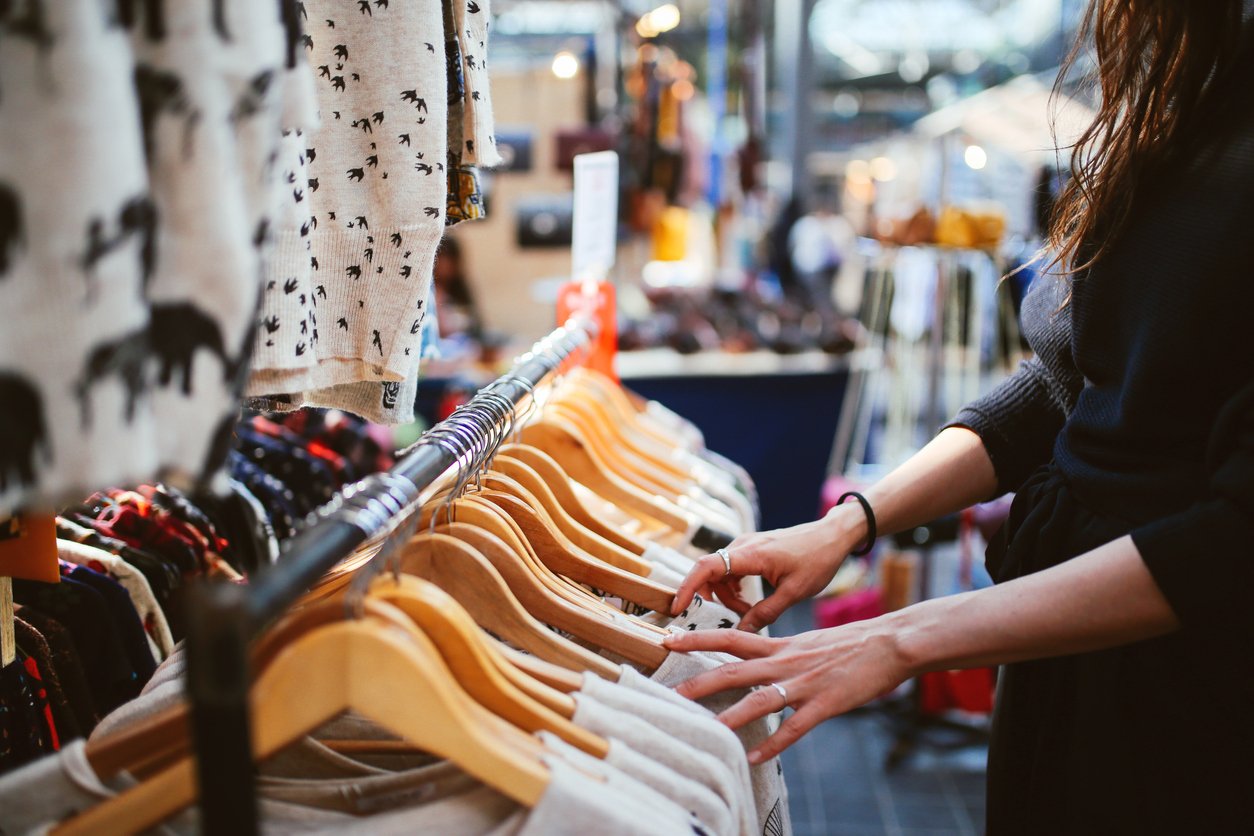Whether it’s reducing meat in our diets or making a concerted effort to separate out our cardboard and glasses, many of us are more mindful of taking care of the environment. It’s important to take stock of how we affect climate change, and day to day changes we can all make.
This month is ‘Second Hand September’, run by Oxfam to highlight the damage that the fashion industry has on the environment and the waste produced from us throwing out clothes. ‘Fast Fashion’, cheaply made and cheaply priced clothes, especially causes a lot of problems and is now a big part of the industry now.
Here are some facts about the impact of clothes on the environment:
- It takes 2700 litres of water to make a cotton t-shirt. That’s the same amount of water than one person would drink over 12 years.
- Us Brits buy more clothes than any other EU country, much of which ends up in landfill or incinerated.
- UK households sent 300,000 tonnes of clothing to landfill in 2016.
- One wash load of polyester clothes can release 700,000 microplastic fibres into the environment. Half a million tons of these microfibers end up in the sea each year, and aren’t biodegradable because they are made from fossil fuels.
- In 2000, moist brands produced two collections a year, but by 2011 this became 5. Zara releases 24 a year. This has lead to clothes being seen as more disposable.
- In 2015 the industry was responsible for 1,715 million tonnes of CO2 emissions and consumes more energy than the aviation and shipping industry combined
All these facts may seem far too big for us to tackle, but there are little things we can all do to help improve our own carbon footprint and reduce the effect of ‘fast fashion’
Shopping In Your Wardrobe
How many of us are guilty of having so many clothes that we sometimes forget certain things we have? Sometimes you don’t need to buy something new for an occasion coming up – make sure you look through your whole wardrobe. There might be a dress you haven’t worn for years but makes you feel good! Try things on rather than just dismissing them straight away, sometimes things look better on than on the hanger.
Swap Clothes With Friends
If you are lucky enough to have friends that are the same size, do some clothes swapping! Something that you may not feel looks good on you might look great on a friend, and vice versa! Make a date to raid each others rejects!
Shopping With Ethical Companies
Many brands work hard to reduce their carbon imprint so you can seek out and buy from brands that are more ethically responsible. This includes using fabrics that are kind on the environment, ensuring factories are using environmental practices, producing locally and offsetting their carbon footprint. A few environmentally friendly brands to try are H&M Conscious, Reve En Vert, Ilk and Ernie, Madia and Matilda, Cossac, MayaMiko and Komodo.
Shopping in Charity Shops
Sometimes charity shops can seem like they’re only for old people but these days there are many ways to shop pre-worn clothes. Re-fashion is an online shop with a curated selection of second-hand clothing and a lot of people sell their designer pre-worn gear on apps like Depop.
Invest In Your Clothes
A £2 top can tempt us all but if you can afford it, try to invest in your clothes. When you spend more, the quality is usually higher and the clothes last longer. This means we’re less likely to be throwing out clothes often, which contributes to landfill waste. Look after your clothes. Don’t wash them too often, not only is too much washing a waste of water, but it also means they don’t last as long.
Donate and Recycle
Instead of chucking anything you don’t want in the bin, make sure you donate to charity or drop off at the recycle bins specifically for clothes that you can usually find at supermarkets.





